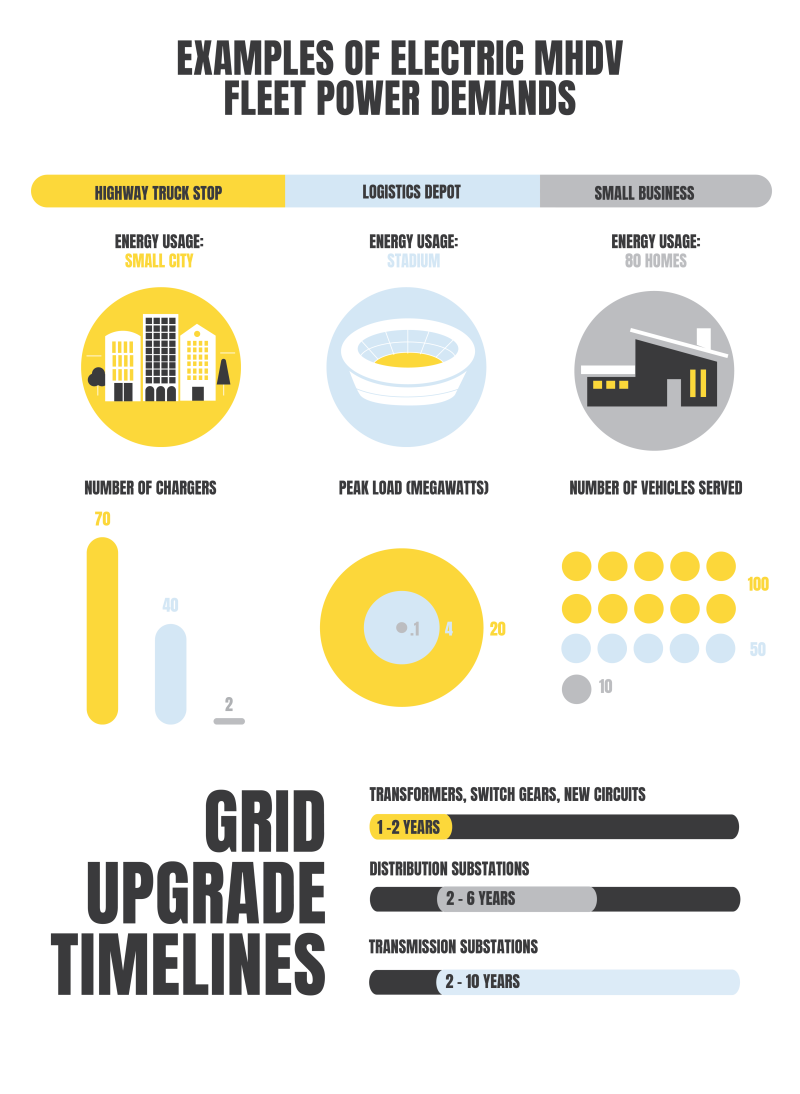How utilities and their regulators can enable proactive, affordable grid expansion in the era of truck electrification
As fleets across the country transition to zero-emission vehicles to meet emissions reduction goals, state regulators and utilities must work together to ensure sufficient grid capacity. The time it can take to power chargers can be a major barrier for fleets seeking to electrify their trucks. Current regulatory processes often discourage or prevent utilities from starting the multi-year process of expanding grid charging infrastructure without a specific request for service by a fleet, leaving the grid upgrade as the limiting factor on widespread fleet electrification. Regulators and utilities need new approaches and tools to proactively expand grid capabilities and get ahead of the coming load growth.
Environmental Defense Fund has released a new report detailing 10 recommendations for how lawmakers, regulators and utilities can work together to enable proactive grid expansion, while minimizing the risk and total cost to ratepayers.
At the center of the recommendations is the necessity for strong collaboration between state regulators and utilities and the need to create incentives for proactive, forecast-based grid expansion and deployment of non-wires alternatives with clear goals and targets.

Grid Readiness
Proactive expansion is one way utilities must prepare the grid for the energy transition while minimizing ratepayer risk. A recent EDF analysis found that when utilities cover the cost of infrastructure upgrades needed for fleet charging it can increase utilities' revenue without raising consumers’ electricity rates – a win-win.
Staff perspective
A nationwide buildout of high-power charging infrastructure and an associated expansion of the electric grid will be needed to achieve high levels of electric MHDV deployment.
Cole Jermyn
Attorney, Energy Transition
Resources
- Fact sheet
Building an electric grid to meet the energy demands of electric trucks and buses
- Press release
Report identifies new tools, strategies for utilities and state regulators to expedite truck electrification
- Blog post
Widespread expansion of zero-emission fleets requires proactive grid upgrades – New York can set the stage
- Press release
Worth the investment: Report finds utilities, fleet owners, consumers benefit when utilities cover infrastructure costs to support charging












